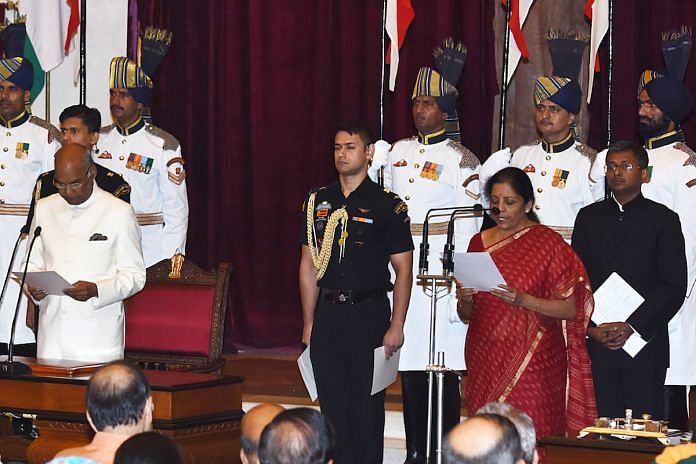Nirmala Sitharaman is expected to work closely with Jaitley to take key industry-related decisions
Nirmala Sitharaman’s appointment as India’s defence minister is likely to keep the focus on the substantial changes that have been initiated in the past few months. There are multiple issues to handle: from a firm push for a private sector-led military-industrial ecosystem to pruning wasteful expenditure and bringing in accountability for public sector units.
Sitharaman will take charge of the ministry after Jaitley returns from his tour of Japan for bilateral talks.
The new defence minister is expected to work closely with Arun Jaitley, who held additional charge of the defence ministry. During his tenure Jaitley focussed on three major areas in his recent, short stint – restructuring the ballooning army to cut flab, rolling out pay commission hikes for soldiers and implementing the government plan to involve the private sector in military-linked Make in India projects.
Sitharaman has worked in coordination with Jaitley on several issues as the Commerce Minister, including tricky World Trade Organisation (WTO) matters.
Sitharaman, who will be India’s first full-time woman defence minister (Indira Gandhi the only one before her, held additional charge as PM), will find her experience as Commerce Minister handy in the new portfolio. Sitharaman’s experience will be useful given the government’s push towards unlocking the potential of defence manufacturing in India to create jobs and bring in foreign investment.
The minister, who joins Sushma Swaraj as the second woman in the all powerful Cabinet Committee on Security (a first in India), will however face the challenges of last-mile execution on several projects. These projects have been in the pipeline since 2014 and are now entering the final stage.
While the PMO keeps track of issues of national security like the situation along the China border, militancy in Kashmir and tackling Pakistan-sponsored terror, Sitharaman may see her time being spent on taking tough decisions on the following issues in the coming months:
Executing mega private sector contracts
Jaitely, while in charge of the defence and finance ministries, managed to unlock the long-stalled strategic partnership model to give the Indian private sector mega projects to manufacture military equipment.
Now, two major projects are set to be rolled out that will require a close eye to be kept on the selection process since they’re being executed for the first time.
The biggest project is a contract worth over $15 billion to produce new single-engine fighter jets in India. The contest for the contract is between two consortiums: Lockheed Martin and Tata that is offering the American F 16, and the Adani-Saab partnership for the Swedish Gripen.
The contest will have complications given the two Indian business houses wield considerable clout and the U.S. is keen on a model partnership for joint defence manufacturing.
The Indian Navy intends to acquire a new fleet of submarines that is likely to see a contest between Russia, Germany and France. In India, the companies that will be hoping to be part of the biggest ever defence project being executed domestically are Larsen & Tubro and Reliance Defence.
Both high value contracts are expected to be awarded by the end of next year if the process goes smoothly, necessitating a close watch by the new minister.
Cutting the Flab
In what the government described as the biggest reforms post-Independence, 57,000 defence personnel are being redeployed as part of a major pruning of departments like Army postal service and military farms.
The changes will be rolled out till 2019, requiring the defence minister to watch out for potential problems in execution. Also, given the lack of institutional reforms over the past few decades, a lot more restructuring is required to free up more personnel for direct combat-related duty.
Sitharaman will have to tackle a military that seems unwilling to let go of excessive manpower in exchange for a leaner and meaner model that will ensure troops that are better equipped.
The flab also needs to be cut in public sector units that have become notorious for time and cost overruns and poor build quality that impacts operational preparedness. Sitharaman is set to oversee some tough calls on disinvesting in PSUs like HAL, BEL, BEML, BDL as well as naval shipyards.
Control on Expenses
The toughest challenge for Sitharaman will be ensuring that military modernisation is carried out while keeping a watch on expenses that seem to have skyrocketed in the past few years.
Recent pay hikes and pension increases have skewed the defence budget greatly in favour of revenue expenses that hit modernisation funds. Setting a realistic tone for the three armed forces on what they can expect in terms of money for new purchases will be a tough job.
All three forces are currently sitting on mega purchase plans ranging from fighters to ships and tanks that may perhaps be unrealistic.



